

Sometimes the simplest intervention can prevent a serious outcome. Such was the case for two student nurses visiting the home of an 84-year-old woman as part of the Penn Medicine at Home’s Senior HealthLink Program. Her vital signs revealed a substantially lower blood pressure than on previous visits. The woman also admitted that she was experiencing dizziness and had passed out — luckily without injury — several days before.
Reviewing her medications, the students immediately saw the problem: She was taking too much of her beta blocker medication, used to treat high blood pressure, due to a miscommunication between her pharmacist and primary care physician. One was the brand name and the other a generic. In other words, she was double dosing unintentionally and her blood pressure had dropped too low.
The student nurses immediately notified members of the SHL staff who intervened with the client’s primary care doctor. The students also educated the woman about taking the medication and proper dosage. A follow-up phone call made by the student nurse determined that the client was stable and taking her medication as prescribed and, even more important, she had avoided an additional adverse reaction from her medication that might have been serious enough to send her to the hospital.
This is just one of many “success stories” of Senior HealthLink, a program which provides a layer of care that helps keep seniors living independently as well as an opportunity for student nurses to get experience with care in the home setting. It’s a win-win for both populations, said Jean Herb, MSN, outreach nurse.
“The program is all about health promotion and health maintenance. Students facilitate our clients’ self management of conditions so they can continue to live independently where they’re living.”
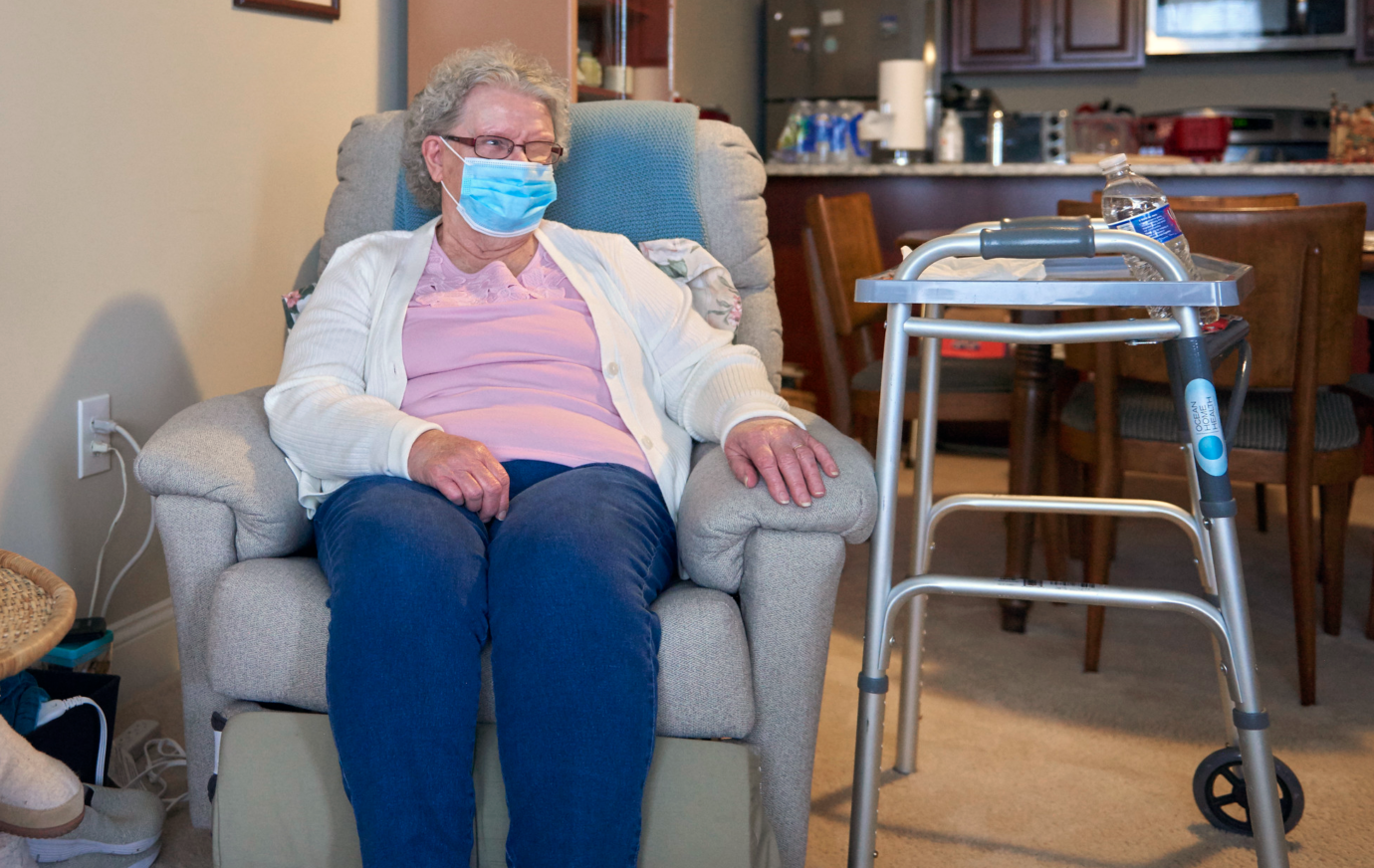
Senior HealthLink client Peggy Reed speaks with student nurses during a visit to her home.
A Safety Net of Care
“Community health is becoming more and more important,” said Outreach Coordinator Mary Jo Baldino, BSN. “COVID has shown us that. Care is taking place where clients live or congregate.” Senior HealthLink helps future nurses gain important clinical experience in this type of care — which can otherwise be difficult for nursing schools to find, she noted. The program offers this type of at-home community health training to nearly 500 student nurses a year from a variety of nursing schools in the area.
SHL’s home visitation program is available to anyone 60 years and older living in Chester County, a quickly expanding population. More than 15 percent of today’s residents are older than 65; by 2030, that number is projected to reach 21 percent. And on average, life expectancy for those who reach 65 is almost 20 years — a span of time when many people would prefer to live independently as long as possible, rather than in a care facility. In addition to home visits, a telehealth service, which started at the onset of COVID, has allowed SHL to reach individuals outside of Chester County as well.


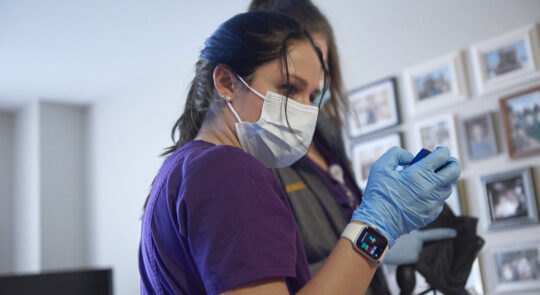
Many of their clients have been discharged from skilled nursing care at home, primarily from other services of Penn Medicine at Home, and are now able to live independently in their homes. SHL provides a type of “safety net,” with periodic visits to help ensure clients stay healthy and help prevent hospitalization.
During the clinical nursing rotation with SHL lasting four to six weeks (depending on the nursing school), student nurses visit clients two days a week, typically seeing two clients each day. Denise Vincent, LPN, schedules all home visits, usually calling clients to set up times. Generally, each client receives a visit every four to six weeks, Baldino said, “but some are so independent — doing well — they tell us to call every 2-3 months.”
All nursing students start their visitation days in the SHL office (everyone must have a negative COVID test before entering the building). They receive an agenda for the day, with the names, addresses and times of each of the visits and review the medical records of each client with their school instructor, who is always available to students by phone to intervene if necessary and also co-visits with the students on a rotating basis.
While at the office, the students also pick up educational material to bring with them. One of the most important topics is preventing falls. According to a community health needs assessment, falls are the biggest threat to older adults maintaining their independence. Falls are the leading cause of injury for those 65 and older… and the majority occur at home. Students also provide handouts on medications appropriate for the clients they’re visiting that day. “The students have designed handouts for patients, with health literacy in mind, in layman’s terms,” said Janet Elliott, MSN, RN, a nursing instructor at West Chester University who supervises all her students who do the rotation.
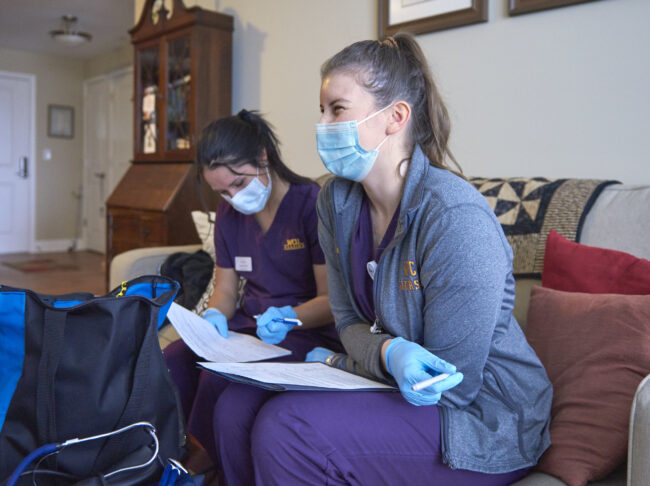
Two student nurses travel together to all home visits, Herb said. “This way they can bounce ideas off each other and they’re learning about teamwork.”
Vital signs and medication review are part of every visit. “They get to perform assessment skills and patient education; they practice wording questions,” Elliott said. “It builds confidence tremendously. They say ‘I can really do this.’”
In addition to doing basic clinical assessments, students perform a fall risk assessment for every SHL client, providing quick home modifications such as night lights, flashlights, bathmats, and batteries. They also screen for psychological status and nutrition. “Students will ask if they can look in kitchen cabinets or in the refrigerator to check the food supply, and sometimes they see nothing,” Baldino said. “They connect clients with resources to get food, like Meals on Wheels. Follow up contact and referrals are made to identified concerns.
“They’re also getting to know patients one-on-one. It’s a holistic approach — taking in the whole picture,” she continued. And for some, the rotation is eye opening. “Many have only seen senior adults in nursing homes or in the hospital but now they can see how much they have to offer. And they appreciate that.”
Evelyn Rimel, an 86-year-old client who has been in the program for the past 10 years, wanted to be in the program for just that reason.
“When they first come, they’re almost afraid to touch you. I tell them, ‘I’m not going to break!’”
A Clinical — and Social — Call
Alex Taylor, who will graduate with her BSN in May from West Chester University, loved the clinical rotation. “Every time we’d come, the people would be so happy to see us,” she said. It was her first time visiting a home to see a patient who just needed support and guidance, not a patient in home care or hospice where more advanced clinical care was provided.
Not surprisingly — especially in this COVID environment — socialization is a part of every visit. “All patients like to talk,” she said, smiling. “Sometimes we’re there an hour because they want to talk. They love to talk about their family… and pets!”
Taylor hasn’t yet decided what area she’ll practice in, but community health is now in the running. She is not alone. The rotation has convinced a number of nursing students to go into this field. “They tell me ‘This is what I want to do, or I will think about this.’ It’s so rewarding for me to hear this,” said Elliott, the West Chester University instructor.
Judging from surveys that both clients and nursing students fill out, the program is a win for both. The one-on-one education students provide to clients has, in the past three years, increased clients’ knowledge of chronic illness management by 6 percent; increased their understanding and compliance of their medication regime by 4 percent, and increased community resources and follow-up referrals by 18 percent.
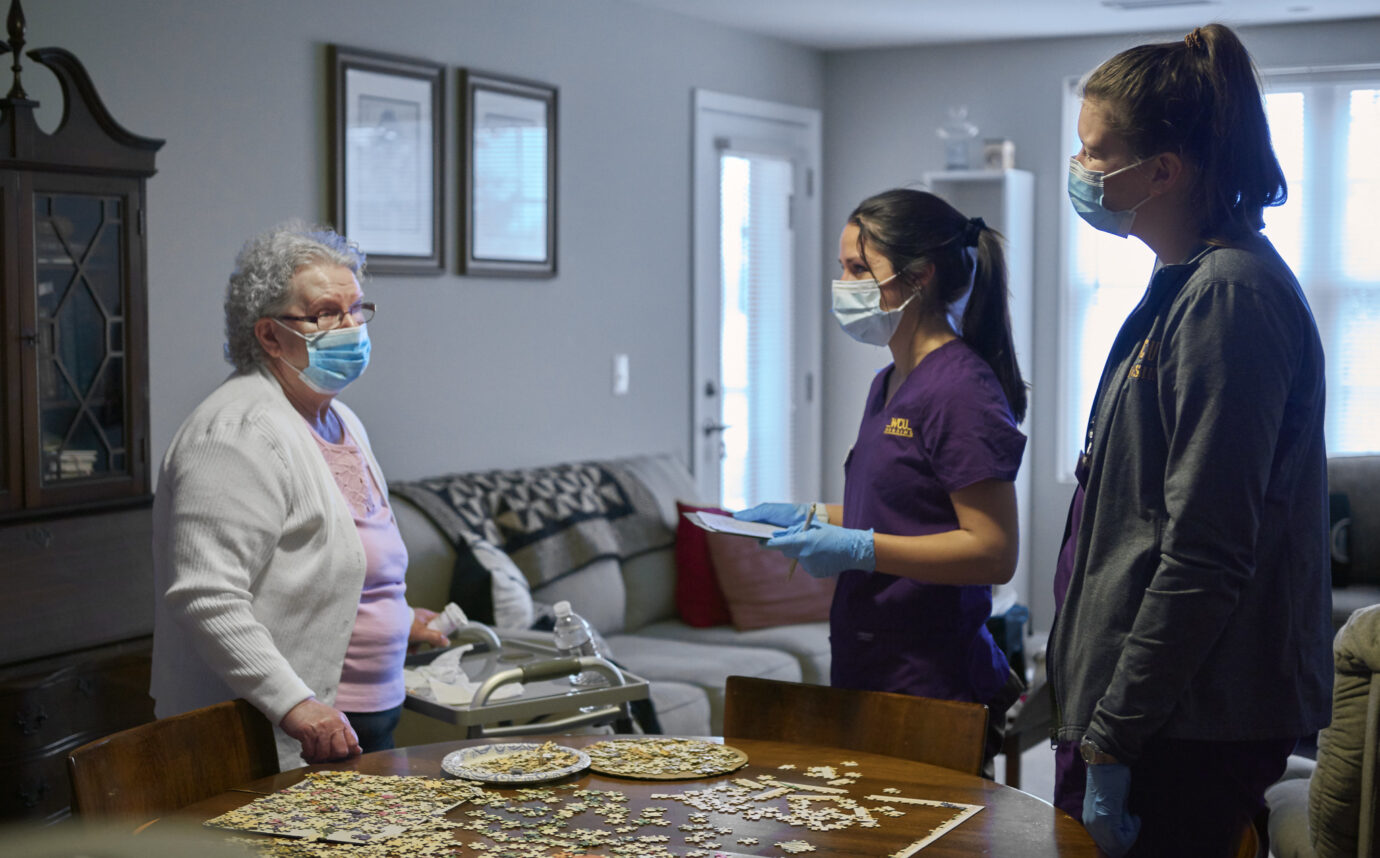
Peggy Reed speaks with West Chester University student nurses Jenna Ricciani and Abigail Shea.
For students, the autonomy of the visits stands out, Herb said. One student said, “I felt like a real nurse — the teaching I could do, the services I could provide.” Indeed, pre- and post-visit student survey data consistently show significant improvement in several areas, including confidence in making a home or telehealth visit, patient teaching skills, knowledge of community resources, and the way they feel about working with elderly individuals.
“It’s such a boost to them and it’s especially important because it occurs in their senior year,” Herb said. “The first year as an RN can be rough. You need a lot of confidence.”
Important Interventions
The COVID-19 pandemic has complicated the process for Senior HealthLink, but it hasn’t gotten in the way of student nurses and their supervisors helping clients in need — including making some good catches of potential serious health issues.
For a period of time in 2020, at-home visits stopped and students converted to telephone visits, which Elliott said were “more challenging for the students. It was harder without visual cues, such as observing edema [limb swelling] or clutter in the home, but it taught them how to listen more closely. They had to visualize and think about the next question. And learn from experience.”
One student nurse discovered during a phone visit that an 82-year-old client had fallen. Although a trip to the emergency department showed no fractures, he told the student he still felt unsteady on his feet. She reported this to the SHL staff who called the client and recommended he contact his primary care physician about at-home physical therapy. Five days later he started PT, and after six weeks, the client reported feeling stronger, avoiding a potential repeat fall and a hospitalization.
Home visits restarted last January and have steadily increased, Baldino said. “We still do some telehealth visits but as the year progressed, there’ve been more home visits than telephone.”
After each day of home visits, students return to the SHL office to finish documenting and review the visits with the instructor, reporting abnormalities that need to be followed up on by either the SHL staff or the college instructor, for example, high blood pressure or wound care. But sometimes it’s a lot more serious.
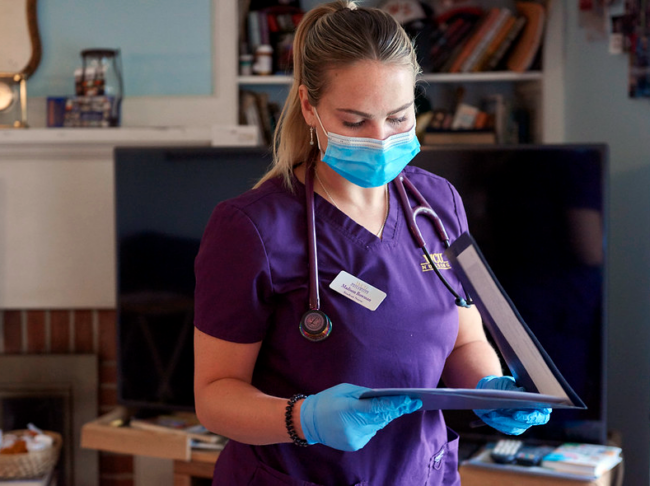
Two nurses visiting James Whalen, now 76 years old, discovered he was in atrial fibrillation while taking his vital signs a few years ago. “They told me, ‘Mr. Whalen. This isn’t good. Your heart is going crazy,’” he said. “I didn’t know it was going that fast. I had no idea!”
The student notified their instructor immediately and Whalen was instructed to call his cardiologist with these new symptoms. He visited his cardiologist at Chester County Hospital the very next day and a day later, his heart was shocked back in rhythm at the hospital. “I wouldn’t have known without those nurses,” Whalen said.
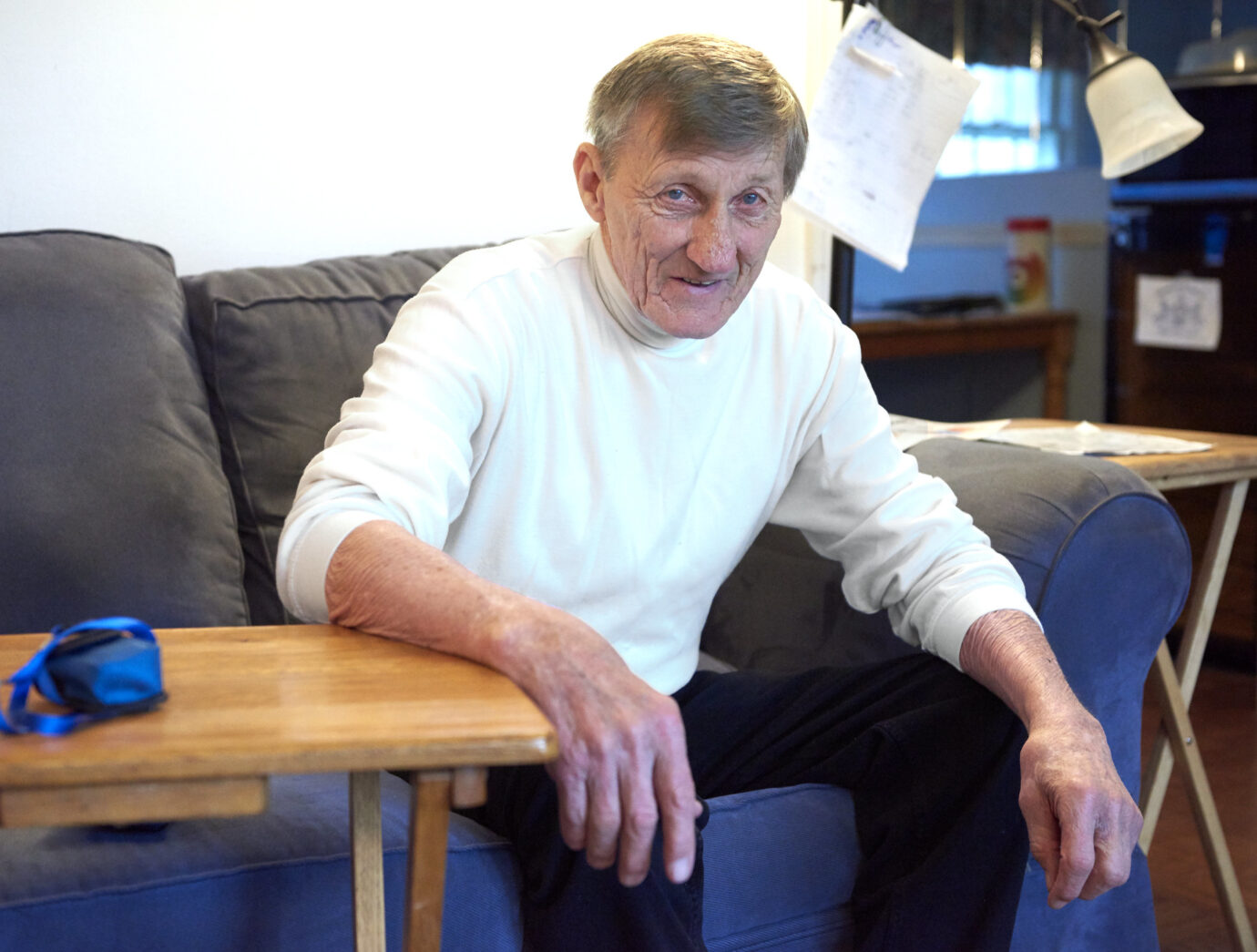
James Whalen credits student nurses from Senior HealthLink for alerting him that he needed to see his cardiologist.
For more information about Senior HealthLink or to make a referral, call 610-431-1852 or email Mary Jo Baldino, RN, BSN at maryjo.baldino@pennmedicine.upenn.edu.







